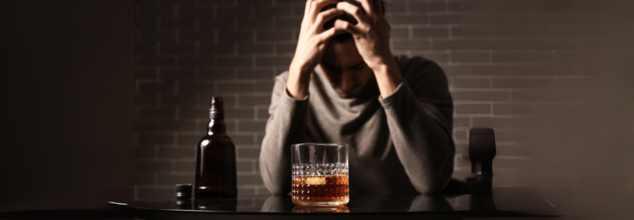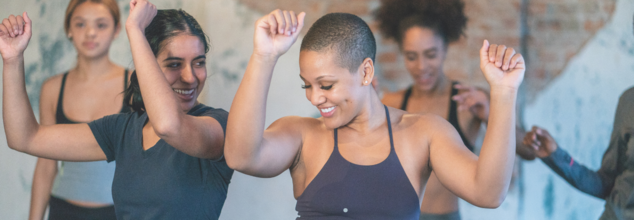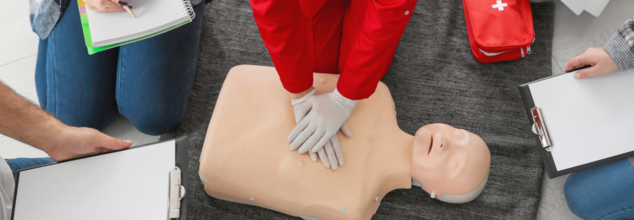- Health Conditions A-Z
- Health & Wellness
- Nutrition
- Fitness
- Health News
- Ayurveda
- Videos
- Medicine A-Z
- Parenting
- Web Stories

Credits: Canva
5 US States That Drink The Most Alcohol
Alcohol has long been a part of social life in the United States. From celebratory champagne to casual beers over the weekend, drinking is woven into the fabric of American culture. But while moderate consumption may be normalized and even encouraged in certain settings, excessive alcohol use remains a critical public health concern. A new report by Drug Helpline reveals stark disparities in alcohol consumption across US states—highlighting regions with particularly high usage rates, and raising pressing questions about the health implications of these patterns.
Alcohol consumption in the US is both widespread and deeply ingrained. According to the National Institute on Alcohol Abuse and Alcoholism (NIAAA), over 85% of adults have consumed alcohol at some point, and more than half of all adults report drinking in the past month. But it’s not just about frequency—binge drinking and high-intensity consumption have become alarmingly common.
Approximately 1 in 4 adults binge drink at least once a month, and those engaging in “high-intensity drinking” (twice the binge threshold) are 70 times more likely to need emergency healthcare. As a result, alcohol is responsible for nearly 1 in 5 ER visits and claims over 140,000 lives annually. The ripple effect isn’t just health-related—the economic cost of alcohol misuse was estimated at $249 billion in 2010, with 75% of that tied to binge drinking.
Why Where You Live Matters for Longevity?
While alcohol is accessible nationwide, some states drink far more than others. Geography influences access, social norms, climate, tourism, and legislation around alcohol—all of which affect consumption patterns.
1. New Hampshire
Despite being one of the smallest and least populated states, New Hampshire consistently tops the list for alcohol consumption. According to data from the NIAAA, residents consume more than 4 gallons of ethanol (pure alcohol) per capita annually—nearly double the national average.
One key reason is tax policy. New Hampshire has no sales tax and minimal excise taxes on alcohol, making it a magnet for out-of-state buyers from neighboring Massachusetts and Vermont. In fact, a significant chunk of alcohol sold in New Hampshire isn’t consumed by residents at all—but it still skews the per capita figures.
However, public health experts warn that easy access combined with low prices can still encourage higher in-state consumption, potentially contributing to increased alcohol-related harm over time.
2. Delaware
With a modest population of under a million, Delaware might seem like an unexpected entry on this list—but its residents drink over 3.5 gallons of alcohol per capita annually.
The state also has a high prevalence of binge drinking, particularly among young adults. Proximity to major urban centers like Philadelphia and Baltimore makes Delaware a hub for weekend tourism, which adds to local alcohol sales. Moreover, the state reports concerning rates of alcohol-related driving fatalities, signaling a growing need for intervention.
3. Nevada
Home to Las Vegas, Nevada’s position on this list comes as no surprise. The state’s vibrant nightlife, relaxed alcohol laws, and 24/7 availability contribute to an environment where drinking is not only accepted but encouraged.
But beyond the casinos and neon lights, Nevada faces real health consequences. High alcohol consumption is linked to above-average rates of alcohol-related deaths and emergency room visits. The state also struggles with alcohol use disorders (AUD), especially in its more remote rural areas where access to treatment is limited.
4. North Dakota
In North Dakota, the long winters and sparse population have contributed to a drinking culture that’s rooted in social tradition. Whether it’s beer at a hockey game or whiskey on a snowy evening, alcohol is often part of community gatherings.
Yet, this culture comes at a cost. North Dakota sees elevated rates of binge drinking, especially among college-age individuals. The state also experiences higher-than-average alcohol-impaired driving deaths, and its rural setting complicates access to mental health and substance abuse services.
5. Montana
Rounding out the top five is Montana, a state known for its natural beauty—and, increasingly, its high rates of alcohol consumption. Like North Dakota, Montana’s rural landscape and weather conditions may play a role in shaping drinking behaviors.
Montana’s per capita alcohol consumption exceeds 3 gallons annually, and the state records frequent alcohol-related fatalities, both on and off the road. Its widespread rural communities often lack the healthcare infrastructure needed to support those with alcohol use disorders, creating a silent public health burden.
It’s easy to reduce alcohol consumption statistics to curiosities or state pride, but these figures reflect broader health, social, and economic challenges. States that rank highest in alcohol consumption are also more likely to face:
- Higher rates of liver disease, certain cancers, and heart conditions
- Increased emergency department visits
- A heavier economic burden on healthcare systems
- Strained family and workplace dynamics
Public health experts continue to call for greater awareness, better alcohol education, and increased access to treatment for alcohol use disorder, especially in high-consumption states.
The numbers don’t lie—America has a drinking problem, and where you live can influence just how serious that problem is. While some states are beginning to roll out initiatives aimed at responsible drinking, there's a long way to go in addressing the deeper health crisis at play.

Credit: Canva
Novo Nordisk Wins Legal Battle That Bars Many Compounded Versions Of Wegovy, Ozempic
Danish pharmaceutical giant Novo Nordisk scored a huge legal victory that restricts compounding pharmacies from marketing or selling cheaper, unapproved versions of its blockbuster weight loss drugs Ozempic and Wegovy. On Monday, US District Judge Mark Pittman denied the Outsourcing Facilities Association's bid for a preliminary injunction that would have prevented the FDA from taking action against its members for making copies of semaglutide, the active ingredient in Ozempic and Wegovy.
What Do Compounding Pharmacies Do?
Compounding is a process where pharmacies mix ingredients of a drug to create a specialised version for specific patients. Say someone is allergic to a dye in a branded medication or needs a liquid form, and the main manufacturer only sells capsules. In that case, the patient can turn to a compounded version or the liquid form. Moreover, when drugs are in short supply, they can be compounded in larger quantities to help fill the gap.
Hundreds of thousands of people flocked to these compounding firms when they didn't have enough money to afford the costly weight loss treatments. The prices of both Wegovy and Ozempic rose exponentially, given the skyrocketing demand in the last two years. Notably, the Texas judge's verdict came in response to a February lawsuit from a compounding trade group against the FDA's determination that the active ingredient in those drugs, semaglutide, is no longer in shortage in the US. The decision also means the FDA can start targeting federally regulated 503B pharmacies, which manufacture compounded drugs in bulk with or without prescriptions, after May 22. The agency’s actions can include product seizures and warning letters to pharmacies.
How Do Semaglutides Work?
Semglutide is the synthetic version of GLP-1, a natural hormone produced in the intestines that regulates blood sugar, appetite, and digestion. Now, every time you eat, your body produces various hormones, including GLP-1. These are called post-nutrition hormones and help you absorb the energy you just consumed.
GLP-1 travels to your pancreas, prompting it to produce insulin. It also travels to the hypothalamus in your brain, which gives you the feeling of being full or satiated. Ozempic imitates this hormone, thereby silencing the food chatter in the brain. Interestingly, for some people this food chatter is really quiet ( people with low appetite), and for others, it is an outburst (people who generally binge eat.) So with Ozempic, silencing this self-talk in the brain, people tend to lose their appetite and eventually weight.
However, it is important to note that losing weight includes not just fat but muscle as well. Losing too much muscle can lead to reduced strength and a shorter life span. Notably, records show that most people who start taking them stop it at 12 weeks; therefore, it is important for some but not for others.

Credits: Canva
International Dance Day: How Can Dance Benefit Your Mental Health?
As we today observe the World Dance Day, let us look at what dancing can help us with. Of course, the physical benefits are there. When you move your body, do any sort of physical activities, you are working out in some form and it helps you stay fit. Like everyone have their fitness regime, your dance routine can also help you stay fit. In fact there are certain fitness regime, including Zumba that keeps you fit through dance.
However, the benefits go much beyond just physical fitness, dancing can actually help you live a stress free life.
TikTok Dances For Mental Health
In one of the latest trends in TikTok, people are bringing back pangs of nostalgia to the internet with their 90s dance on rapper Doechii's song 'Anxiety' from the "The Fresh Prince of Bel Air".
Why is this trend important? With big names also jumping in and dancing to the rhythms, including Wil Smith and Tatyana Ali, experts say that this is helping ordinary people normalize anxiety.
Certain anxiety disorders are marked by persistent, or excessive worry. It could be fear about situations. As per the Mayo Clinic, these moments of anxiety can include panic attacks and sudden episodes of intense fear or discomfort
Research suggest that creative activities, including dancing can help relieve this stress. Dancing also engages multiple areas of the brain and demands full attention, which can then shift the focus from anxiety feelings. Supporting this idea, a 2021 study from UCLA Health found that conscious dance led to mental health improvements in a large majority of participants, particularly those dealing with anxiety, depression, or a history of trauma.
Dancing: A Complete Stress Buster
Dance involves full-body movement and coordination. This kind of physical activity stimulates the release of endorphins—natural chemicals in the brain that act as mood boosters and stress relievers. During a panic attack, when anxiety can feel overwhelming, these endorphins help calm the body and mind.
Engaging in dance also activates deep breathing patterns, especially in structured styles like Indian classical dance. This is important because panic attacks often lead to rapid, shallow breathing or hyperventilation. The breath control involved in dancing can help slow things down and regulate the body’s response.
In addition, dance improves body awareness. When someone is in the middle of a panic attack, they often feel disconnected or dissociated from reality. Focusing on movement—on the placement of your arms, the rhythm of your steps, the tension in your muscles—can bring attention back to the present. This grounding effect helps reduce the intensity of the attack and prevents it from escalating.
Dance as a Distraction and a Mindfulness Tool
Experts explain that one reason dance can be so effective is because it serves as a powerful distraction. Instead of spiraling into anxious thoughts, the brain is forced to concentrate on movement, rhythm, and coordination. This temporary shift in focus can prevent panic from taking over.
Dance also builds mindfulness, a practice often recommended in therapy. Whether it's through a slow classical routine or a high-energy freestyle session, dance requires attention to the now. The combination of mental focus and physical release gives the body a chance to reset and relax.

Credits: Canva
Know What to Do: CPR and AED Basics for Everyone
Last year in June, when a woman collapsed on an escalator at Buffalo's airport, and Phil Clough, who is an experienced emergency medical responder knew exactly what to do. He and a bystander, as the Washington Post reported, quickly laid the woman flat on her back. They checked her pulse and breath. Her pulse was faint and her breathing was shallow and erratic. A few moments later, she stopped breathing altogether.
Realizing she might be experiencing a cardiac arrest, Clough immediately began performing chest compressions. He pressed hard and fast on the center of her chest while other bystanders called 911 and fetched an automated external defibrillator (AED). Within seconds of receiving a shock from the AED, the woman opened her eyes. By the time the airport rescue team arrived, just minutes later, she was conscious and able to speak.
Clough’s quick actions saved the woman’s life, but he credits his preparedness to a life-changing incident several years earlier. After witnessing a woman collapse at his gym and feeling helpless, he took a college course to become certified as an emergency medical responder. This training allowed him to respond with confidence when faced with a life-or-death situation.
The Challenge of Cardiac Arrest
The woman in Buffalo was fortunate that bystanders knew how to respond. Unfortunately, most people who experience cardiac arrest do not receive immediate help.
According to the American Heart Association, more than 350,000 cardiac arrests occur outside of hospitals in the U.S. annually. Tragically, 90% of these individuals do not survive, often because help arrives too late. For each minute that passes without intervention, a person’s chances of survival decrease by 10%. However, with prompt cardiopulmonary resuscitation (CPR) and an AED shock if necessary, survival rates can double or even triple.
Despite the importance of swift intervention, fewer than half of people who suffer cardiac arrest outside of a hospital setting receive immediate assistance. This lack of action is often due to a lack of training and preparedness. Cardiac arrest can happen anywhere, but with public access to AEDs and trained bystanders, survival rates could improve dramatically.
The Role of AEDs in Saving Lives
A crucial part of treating cardiac arrest is the use of an AED, a portable device that delivers an electric shock to the heart. The AED analyzes the heart’s rhythm and guides the user through the steps to apply a shock if needed. Although many states require AEDs to be available in public places such as airports and malls, they are not always easy to find. A study spanning 2019 to 2022 revealed that in public settings, AEDs were used only 7% of the time, and CPR was performed 42% of the time after a cardiac arrest incident.
To address this issue, PulsePoint, a nonprofit organization, has registered 185,000 AEDs in 5,400 U.S. communities, reports the Washington Post. The group’s goal is to help communities build their AED registries and integrate them with local 911 services. In addition, PulsePoint’s mobile app alerts trained CPR responders about nearby cardiac arrests and identifies the closest AEDs, enhancing the chances of saving a life.
Overcoming Barriers to Bystander Intervention
While CPR and AED knowledge can save lives, many people hesitate to intervene during an emergency due to fear of making a mistake, lacking confidence, or worrying about legal liability. However, all 50 states and Washington, D.C. have “Good Samaritan” laws that protect individuals from legal consequences when they provide help in a medical emergency.
Lack of CPR training is another significant barrier. A study found that only 18% of people had received CPR training within the last two years, which is crucial for skill retention. Although many people have received CPR training at some point in their lives, the skills may be outdated or forgotten.
To address this, some states have made CPR training mandatory for high school graduation, and countries like Denmark and Norway have implemented similar requirements. In the U.S., CPR courses are widely available online and in-person, and many take just a few hours to complete. These courses teach individuals the basics of CPR, which involves performing chest compressions at a rate of 100 to 120 per minute and a depth of at least two inches.
© 2024 Bennett, Coleman & Company Limited



